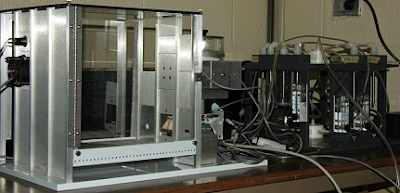In order to characterize a sample of Wastewater Odor, there are basically 4 different factors that come into play here, mainly intensity, detectability, characters and hedonics. However, for most part of our discussion here, we will only cover on detectability as it is the most widely used singular factor that are generally measured and characterized in every wastewater treatment plants.
Basically, wastewater odor intensity can be determined by using sensory methods from individuals with high sensory ability while specific odor concentrations can be measured using equipment and tools specially developed for it. Most of the time, a highly trained lab technician is able to carry out the test and provide accurate results. Therefore, without any instrumentation, it is actually possible for humans to actually determine and measure the odors that are generated from the treatment plant facilities. In certain conditions whereby there is a special need such as detection on the level of hydrogen sulfide, digital meters can be used instead to measure the direct concentrations.
 During sensory test carried out by lab technicians, usually the wastewater samples are diluted and the number of dilutions needed to reduce the odor to minimum detectable level limit can then be determined which is called MDTOC, also known as Minimum Detectable Threshold Odor Concentration. For example, if let’s say three portions of similar odor-free air volumes is required to dilute the sample to its MDTOC, then the result would be expressed by 3 dilutions of MDTOC. Another commonly used method to measure wastewater odor strength is by using ED50 which also works on the same applied principle.
During sensory test carried out by lab technicians, usually the wastewater samples are diluted and the number of dilutions needed to reduce the odor to minimum detectable level limit can then be determined which is called MDTOC, also known as Minimum Detectable Threshold Odor Concentration. For example, if let’s say three portions of similar odor-free air volumes is required to dilute the sample to its MDTOC, then the result would be expressed by 3 dilutions of MDTOC. Another commonly used method to measure wastewater odor strength is by using ED50 which also works on the same applied principle.Whichever method selected here are somehow every subjective because each individual can produce different conclusions for the same test sample. Thus, in order to avoid all those errors, especially sample modification which can take place due to storage and degradation of intensity due to external conditions, olfactometers have been developed to be used to directly measure and characterize the wastewater odor without the need for sampling containers.
Apart from olfactometers, sometimes wastewater samples such as those containing high level of butanol, a butanol wheel can be used for the measurement based on the level of intensity of the odor based on a standard scale of concentrations. Similarly, a scentometer is the recent lab instrumentation development which is a handheld devices in which malodorous air that passes through orifices is diluted with air and the dilution ratio can then be determined. Most often combination of different devices are combined into a singular mobile system which can be shifted to the wastewater treatment plant site to get accurate readings. Related: Odor control in Treatment Facilities


